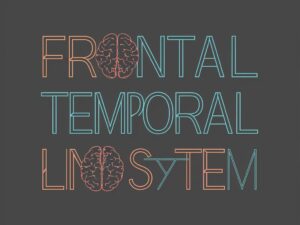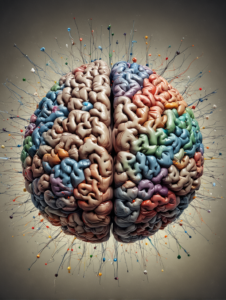Book Link 22 The Brain and Spinal Cord
<back next> — index
By the end of this section, you will be able to:
- Explain the functions of the spinal cord
- Identify the hemispheres and lobes of the brain
- Describe the types of techniques available to clinicians and researchers to image or scan the brain
Explain the Functions of the Spinal Cord
The spinal cord is like a superhighway that carries messages between the brain and the rest of the body. It helps us move and feel things. Psychology is important because it’s like the body’s messenger, helping us understand how our thoughts and feelings are connected to our movements and senses.
 The three disciplines in psychology most related to this topic are neuropsychology, psychophysiology, and cognitive psychology.
The three disciplines in psychology most related to this topic are neuropsychology, psychophysiology, and cognitive psychology.
The frontal, temporal, and limbic systems are the parts of the brain that influence or control thoughts and feelings. These areas involve decision-making, emotional processing, and memory and play a big role in our thoughts and feelings.
The spinal cord is related to this because it serves as a pathway for messages traveling between the brain and the rest of the body. It plays a crucial role in transmitting sensory information from the body to the brain and sending motor signals from the brain to the muscles. This communication pathway is essential for coordinating our responses to external stimuli, which can influence our thoughts and feelings.
Identify the hemispheres and lobes of the brain.
The brain has two hemispheres, the left and the right, each doing different things. The lobes of the brain are like other sections and have specific jobs. In psychology, we study how these parts of the brain affect things like thinking, feeling, and behavior.
Cognitive psychology, clinical psychology, and neuropsychology are the three main psychology disciplines interested in the hemispheres and lobes of the brain. These disciplines study how different parts of the brain are involved in our thoughts, behaviors, and emotions and how they can be related to psychological disorders and cognitive processes.
It is important to have two brain hemispheres because they allow for specialization of function. Each hemisphere has strengths and abilities, working together to process information and control various tasks. For example, the left hemisphere is often associated with language and analytical thinking. In contrast, the right hemisphere is more involved in creativity and spatial awareness. Having two hemispheres allows for a more complex and diverse range of cognitive abilities.
Basics about Imaging and Scanning the Brain
Psychological clinicians and researchers use cool techniques to learn about the brain. One way is imaging, like taking brain pictures to see what’s happening inside. This helps them understand how the brain works and its connection to our thoughts and feelings.
 A brain imaging specialist typically needs to have a strong educational background in fields such as neuroscience, psychology, or medical imaging. This can include earning a bachelor’s degree in a related field and advanced studies at the graduate level, such as a master’s or doctoral degree. Additionally, specialized training in brain imaging techniques and technologies is usually necessary to become proficient in this field.
A brain imaging specialist typically needs to have a strong educational background in fields such as neuroscience, psychology, or medical imaging. This can include earning a bachelor’s degree in a related field and advanced studies at the graduate level, such as a master’s or doctoral degree. Additionally, specialized training in brain imaging techniques and technologies is usually necessary to become proficient in this field.
Brain imaging can help psychology professionals in a couple of ways. First, it can provide valuable insights into psychological disorders’ neurological basis, assisting professionals to understand the underlying brain mechanisms better and develop more effective treatments.
Second, brain imaging can also aid in research by allowing professionals to observe and measure brain activity associated with specific cognitive processes or behavioral responses, providing a clearer understanding of how the brain functions in psychology.
Summary
The spinal cord acts like a superhighway, sending messages between the brain and the rest of the body. It helps us move and feel things. Different parts of the brain, like the frontal, temporal, and limbic systems, control our thoughts and feelings. The spinal cord plays a crucial role in transmitting sensory information from the body to the brain and sending signals from the brain to the muscles. This helps coordinate our responses to what’s happening around us.
The brain has two hemispheres, left and right, each with different strengths. They work together to process information and control tasks. Brain imaging techniques help psychologists understand the brain’s connection to our thoughts and feelings and can provide insights into psychological disorders. This can lead to better treatments and a clearer understanding of how the brain functions in psychology.